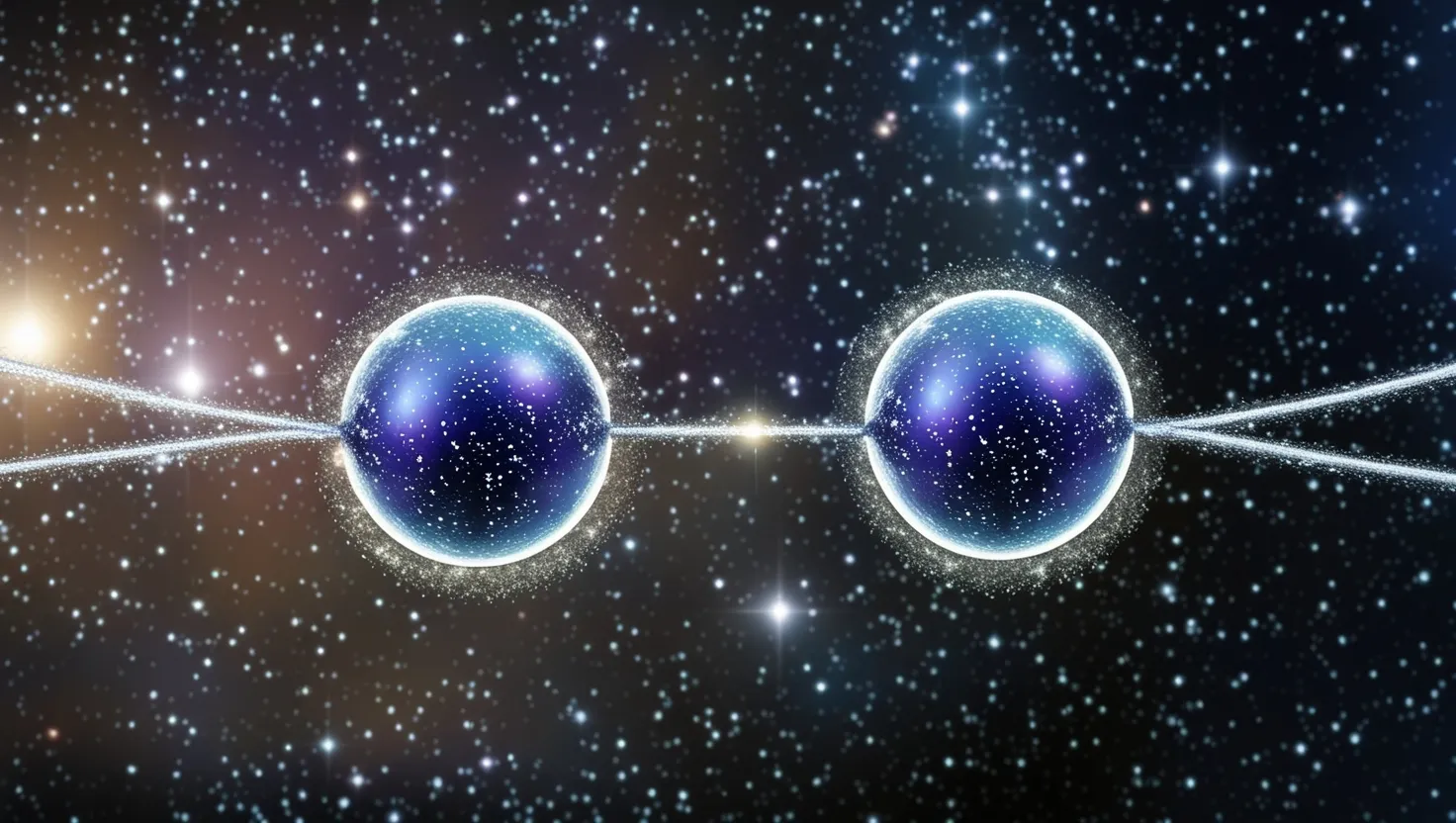In the vast and intricate realm of quantum physics, there exists a phenomenon that has captivated scientists and laypeople alike for decades: quantum entanglement. This mysterious connection between particles, often described as “spooky action at a distance” by Albert Einstein, defies our classical understanding of space and time.
Imagine two particles, created in such a way that their properties are intimately linked, regardless of the distance between them. If you were to measure the state of one particle, you would instantly know the state of the other, even if they are separated by billions of light-years. This is not just a theoretical concept; it has been experimentally verified numerous times.
To grasp the essence of entanglement, let’s delve into the concept of quantum superposition. In the quantum world, particles can exist in multiple states simultaneously, a notion that challenges our everyday experience. For instance, a particle can have a spin that is both “up” and “down” at the same time until it is measured. When a measurement is performed, the particle’s state is said to collapse into one of the possible states.
Entanglement takes this concept a step further. When two particles are entangled, their properties are correlated in such a way that the state of one particle is dependent on the state of the other. This correlation persists even when the particles are separated by vast distances. For example, if you have two entangled particles with spins that must add up to zero, measuring the spin of one particle will instantly determine the spin of the other, regardless of how far apart they are.
This phenomenon was first highlighted by Einstein, along with Boris Podolsky and Nathan Rosen, in their famous 1935 paper known as the EPR paradox. They proposed a thought experiment designed to illustrate what they saw as an absurdity of quantum mechanics, challenging the fundamental principles of reality. However, subsequent experiments, particularly those by Alain Aspect and others, have conclusively shown that entanglement is a real and observable phenomenon.
One of the most fascinating aspects of entanglement is its potential to revolutionize communication and computing. Imagine a network where information can be transmitted in a way that is virtually unbreakable. This is the promise of quantum entanglement in the context of quantum computing and quantum cryptography. By using entangled particles, scientists can create ultra-secure communication channels where any attempt to intercept the information would be immediately detectable, thanks to the instantaneous correlation between the particles.
Recent experiments have pushed the boundaries of entanglement even further. Researchers have managed to entangle objects that are almost visible to the naked eye, such as tiny beams etched into silicon chips and vibrating aluminum drum heads on a silicon chip. These experiments, while still in their infancy, suggest that entanglement is not limited to the microscopic world but can be scaled up to larger objects.
For instance, a team led by Simon Gröblacher at Delft University of Technology created beams about 10 micrometers long, roughly the size of a bacterium, which could oscillate like a plucked guitar string. By connecting these beams with an optical fiber and cooling them to near absolute zero, the researchers were able to entangle the beams in such a way that adding energy to one beam would instantly affect the other. Similarly, Mika Sillanpää and his team at Aalto University manufactured pairs of aluminum drum heads that, when cooled and nudged with microwaves, exhibited correlated motions, demonstrating entanglement in a different setup.
These advancements have significant implications for future technologies. For example, Gröblacher’s setup is designed to be compatible with existing telecommunications systems, paving the way for a quantum internet that could transmit information with unparalleled security. The potential applications extend beyond communication; entangled particles could also be used for ultrasensitive measurements of gravity and other physical phenomena.
Despite the excitement around these discoveries, there is still much to be understood. The question of how far entanglement can be scaled up remains an open one. As Andrew Armour, a physicist at the University of Nottingham, puts it, “There really is an interesting open question, which is: ‘How far can you go up in scale?’”
Entanglement also challenges our intuitive understanding of space and time. According to Einstein’s theory of special relativity, information cannot travel faster than the speed of light. However, entanglement seems to defy this principle by allowing instantaneous communication between particles. But here’s the crucial point: this communication is not useful in the classical sense. The information that appears to travel faster than light is random and cannot be used to transmit meaningful messages.
To illustrate this, consider a scenario where two entangled particles are separated by vast distances, one on Earth and the other on Pluto. If you measure the state of the particle on Earth, you instantly know the state of the particle on Pluto. However, this does not allow you to send a message faster than the speed of light. The information is inherently random and does not provide any useful data that could be exploited for communication.
In practical terms, this means that while entanglement is fascinating, it does not enable faster-than-light communication. Instead, it offers a way to generate truly random numbers, which is crucial for secure communication and quantum computing. Imagine a lottery system where the numbers are generated in such a way that they are guaranteed to be random and fresh, minimizing the chance of any manipulation.
Entanglement is not just a curiosity of quantum physics; it has real-world implications. For instance, in the realm of finance, secure communication is paramount. Quantum entanglement could provide the basis for ultra-secure financial transactions, protecting sensitive information from cyber threats.
In the broader context of world affairs, the development of quantum technologies could have significant geopolitical implications. Countries that invest heavily in quantum research and development may gain a strategic advantage in terms of secure communication and computational power.
As we continue to explore and understand entanglement better, we are forced to confront the limits of our current understanding of reality. Quantum mechanics, with its probabilistic nature and strange phenomena like superposition and entanglement, challenges our classical worldview. It invites us to think differently about how the world works and what is possible.
In my own journey through the world of quantum physics, I have found that the more I learn, the more I realize how little we truly understand. Entanglement is a reminder that there are still many mysteries waiting to be unraveled, and the pursuit of understanding these mysteries is what drives science forward.
As we delve deeper into the mysteries of quantum entanglement, we are not just exploring the intricacies of the physical world; we are also pushing the boundaries of human knowledge and innovation. This journey, though complex and often counterintuitive, is a testament to human curiosity and the relentless pursuit of understanding the universe around us.






